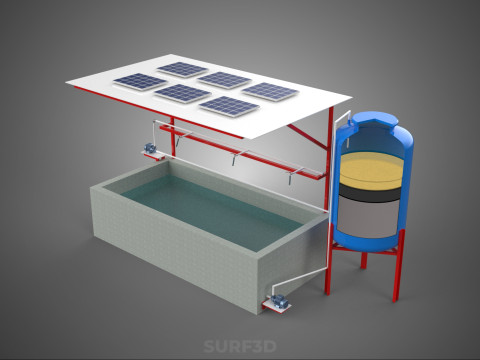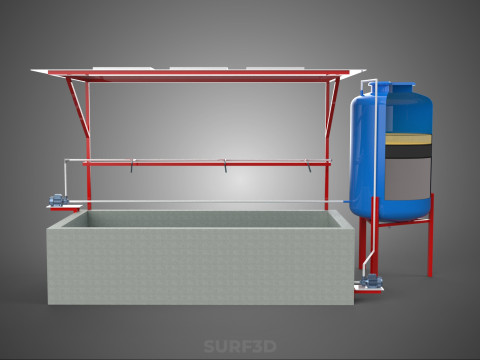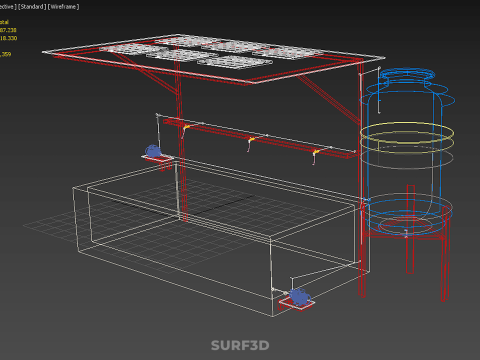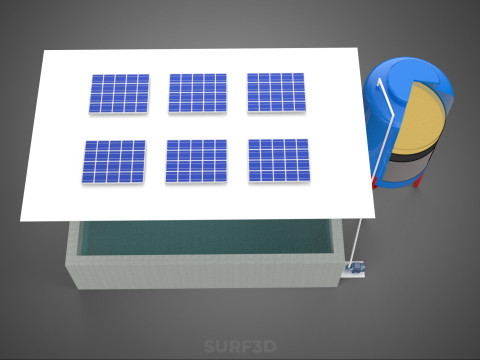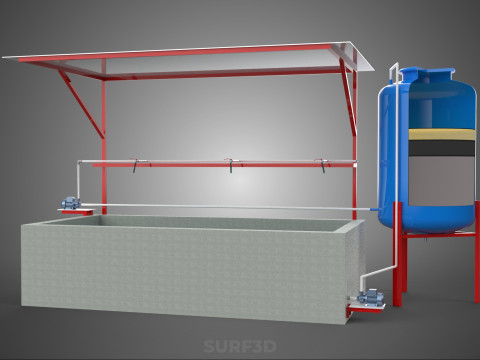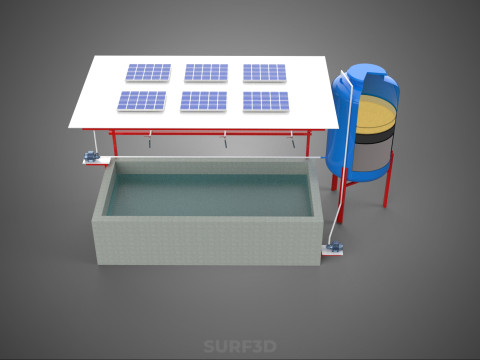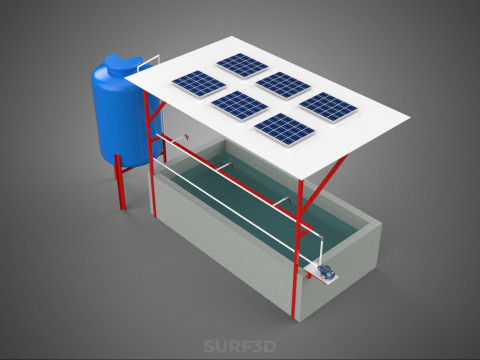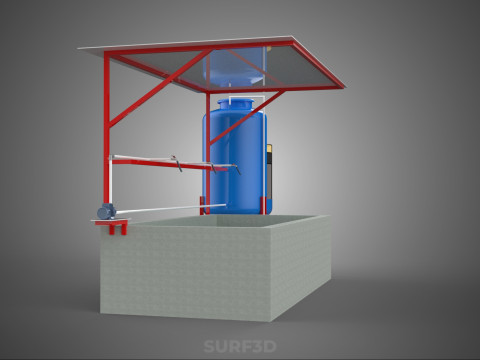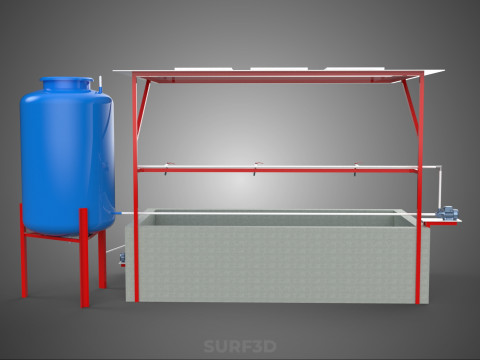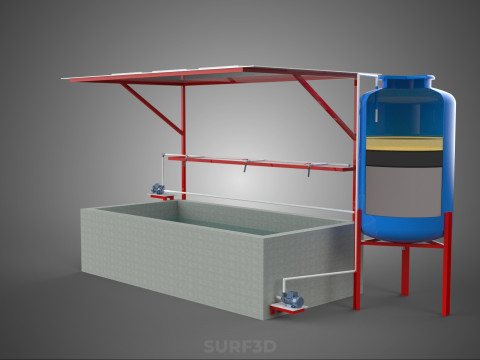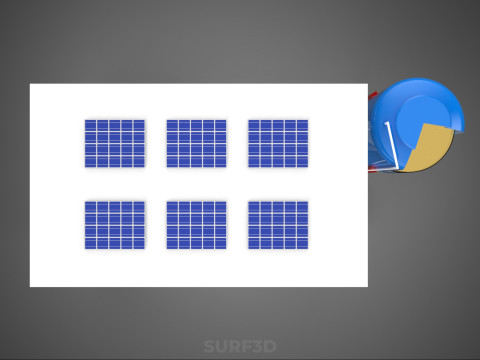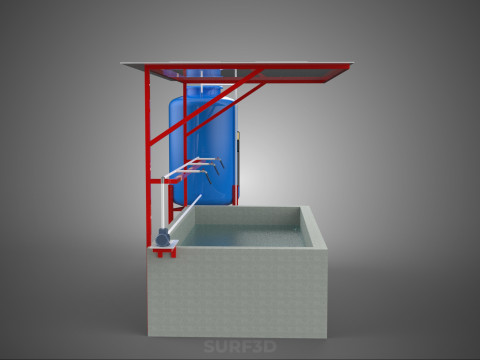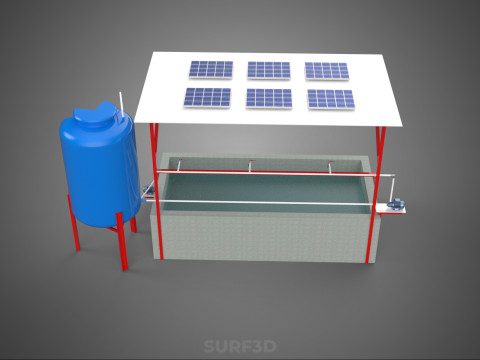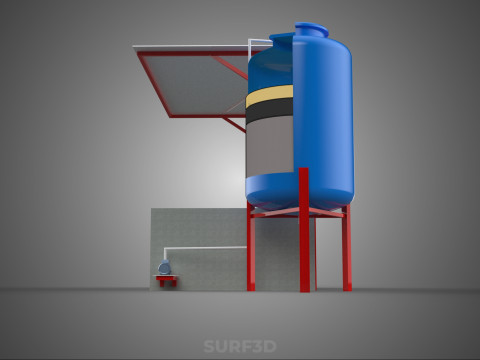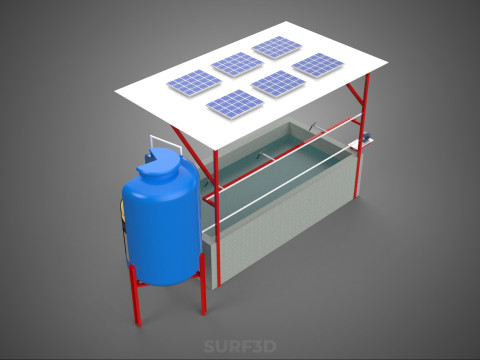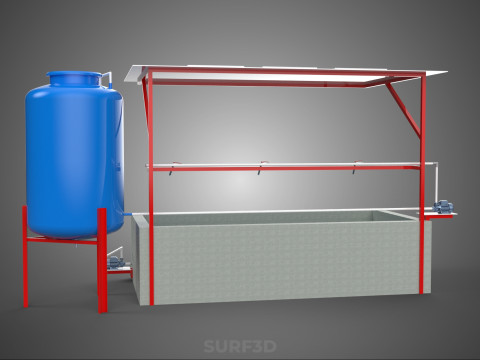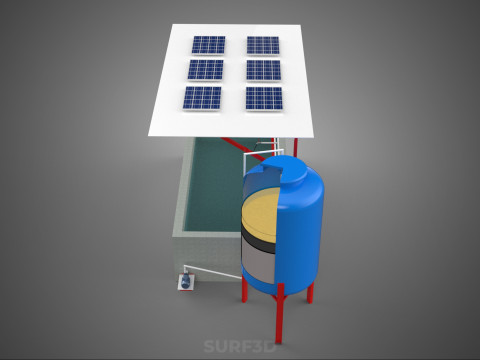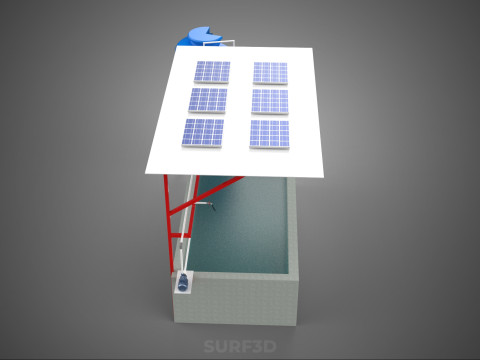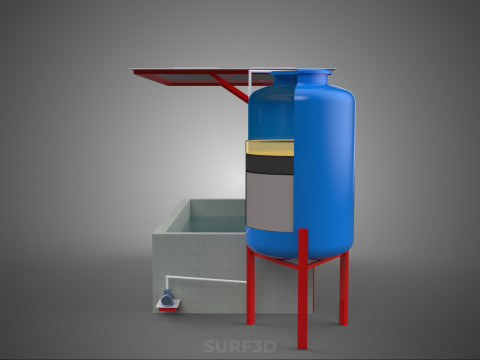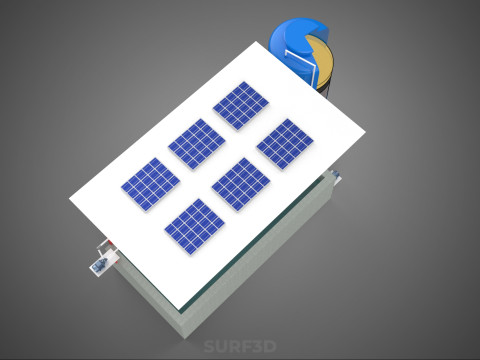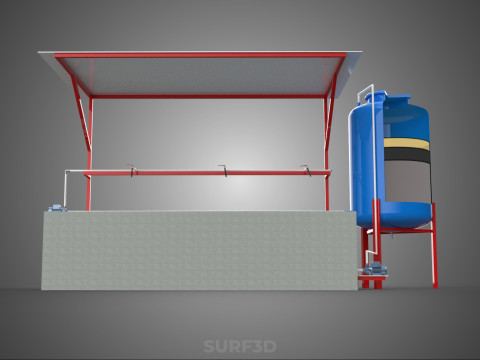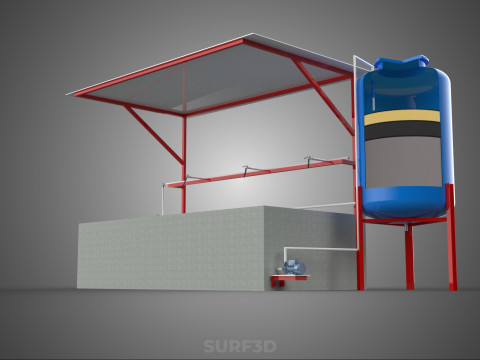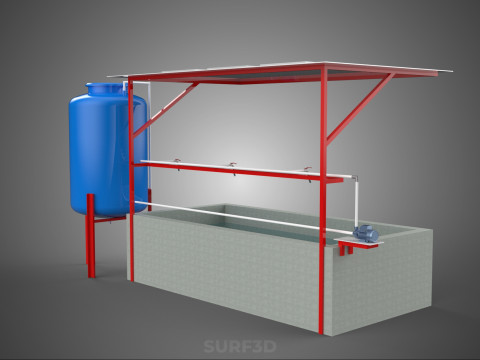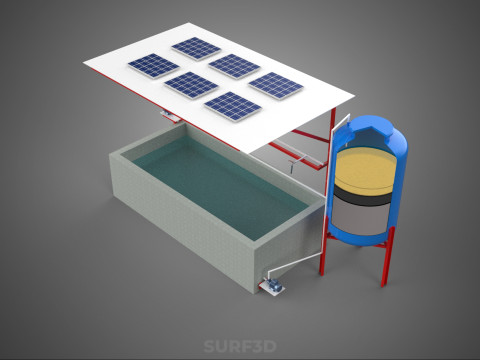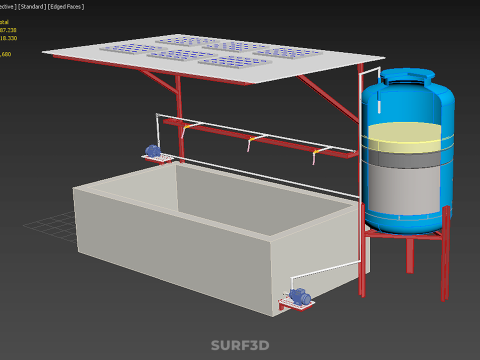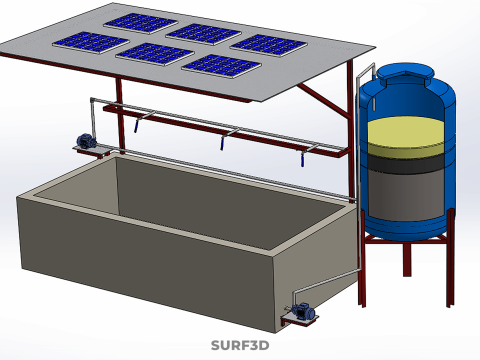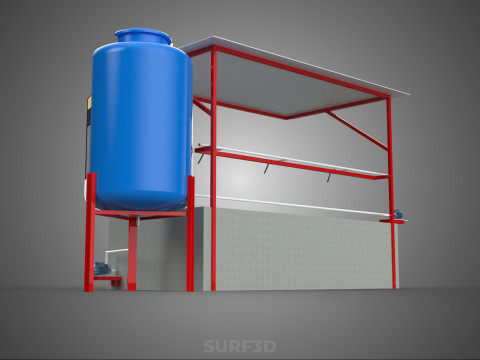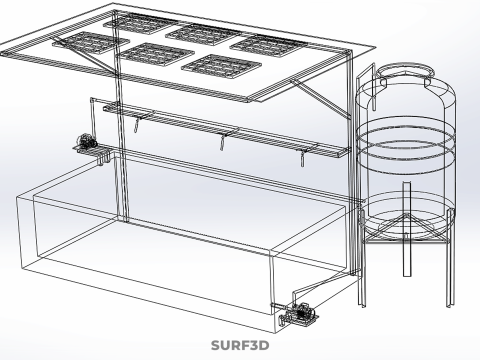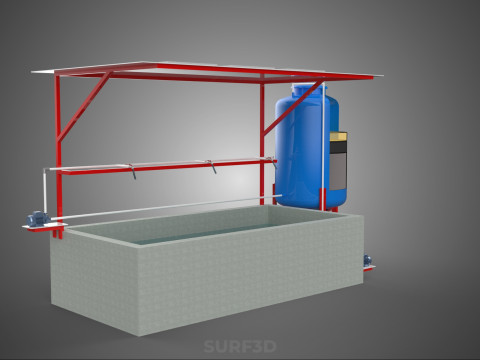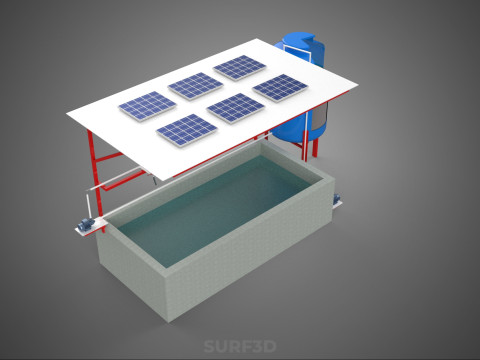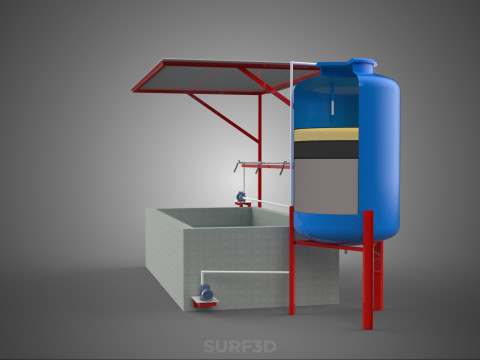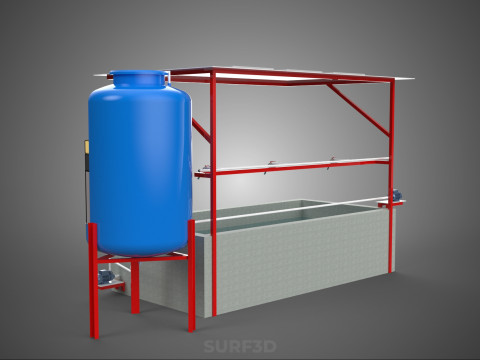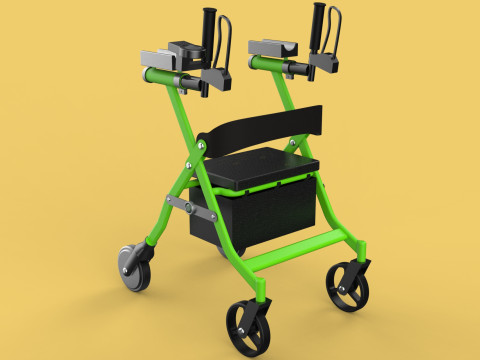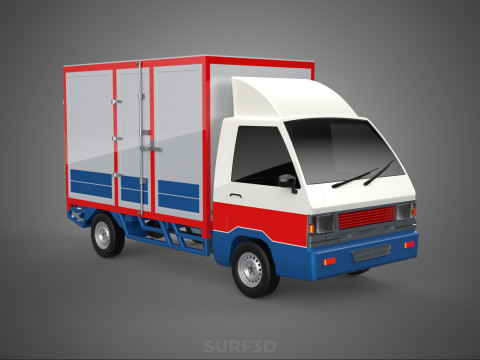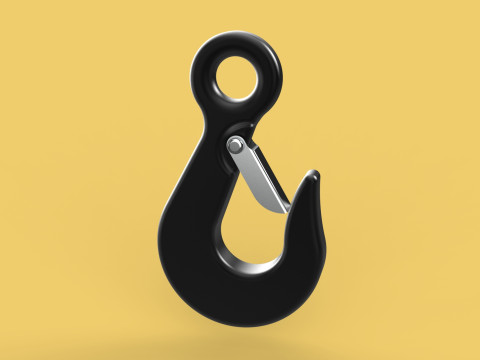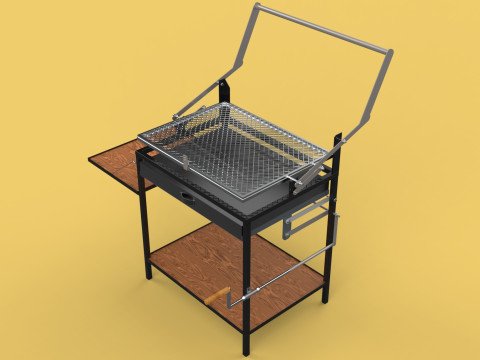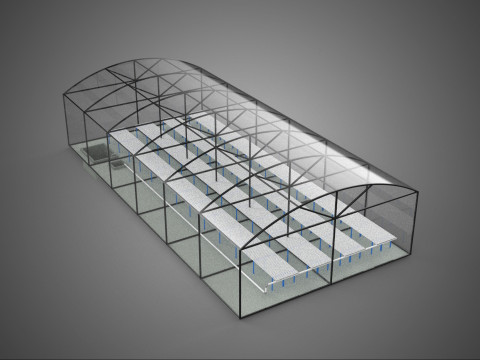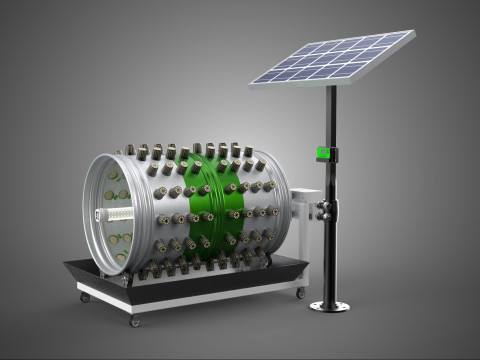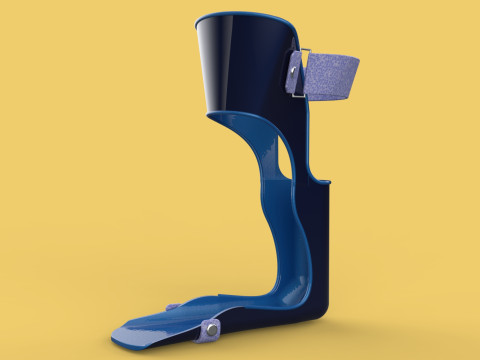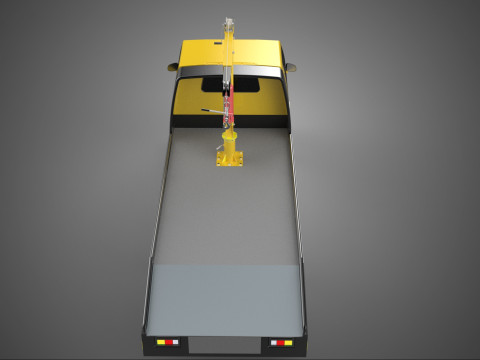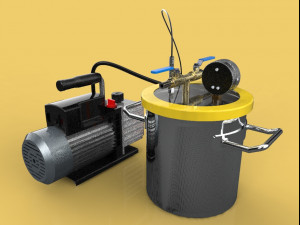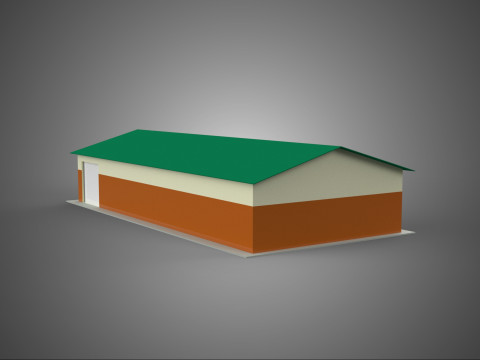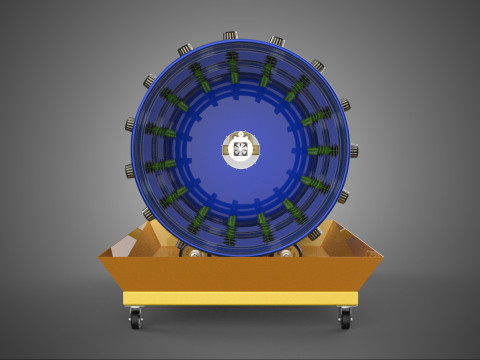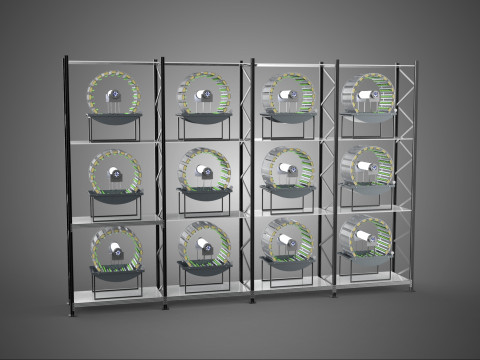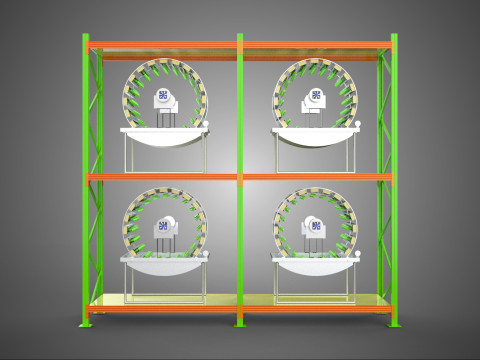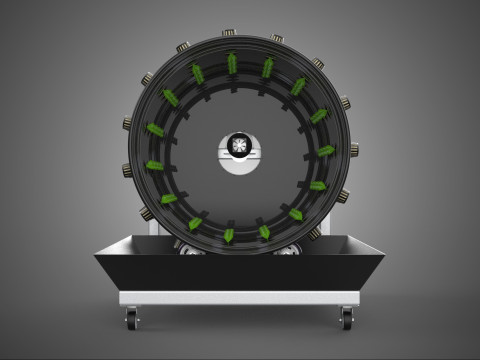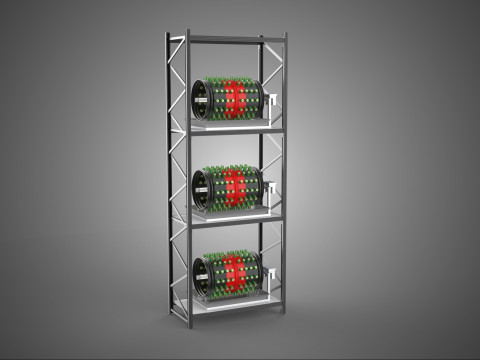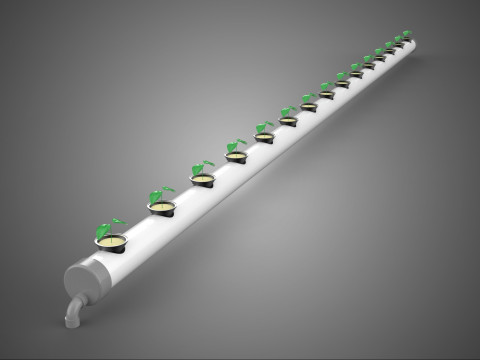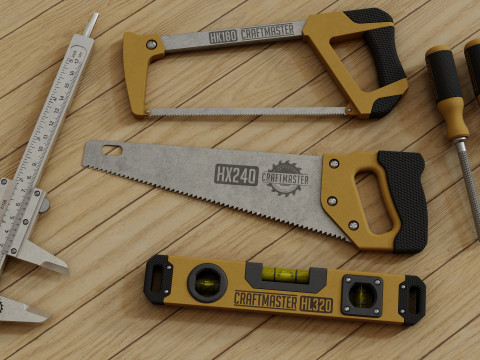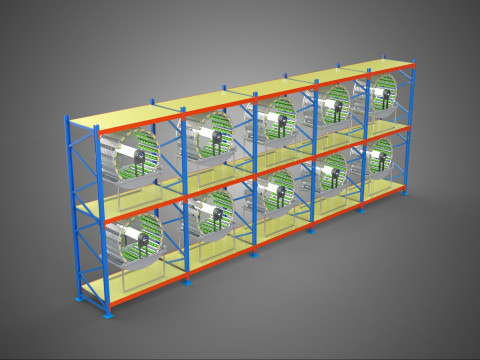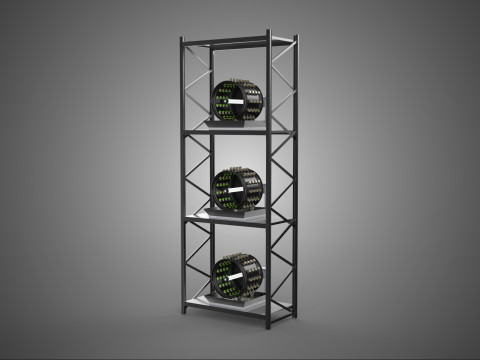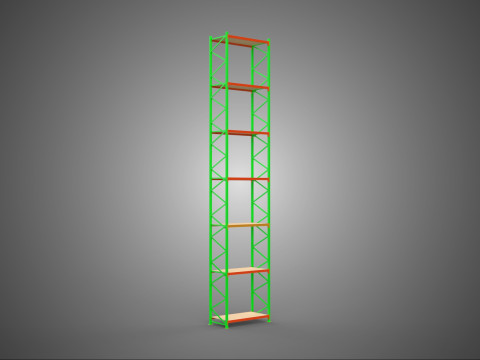POMPA DI RICIRCOLO A CELLE SOLARI FILTRO ACQUA STAGNO PER PESCI ACQUACOLTURA Modello 3D
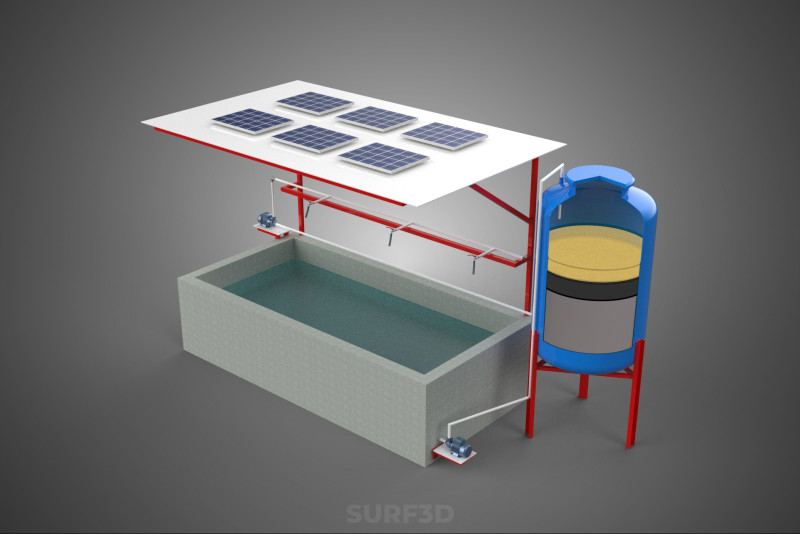
- Formati disponibili: GLB (.glb / .gltf) 4.34 MB3D Studio (.3ds) 2.97 MBBlender3D (.blend) 7.93 MBACIS(.sat) 8.48 MBStereolithography (.stl) 6.36 MBWavefront OBJ (.obj) 5.79 MBAutodesk FBX (.fbx) 10.45 MBIGES (.iges) 3.69 MBAutodesk 3DS MAX (.max) 25.37 MBCollada (.dae) 9.42 MBSTEP (.step) 3.58 MBAutodesk AutoCAD (.dwg) 8.55 MBSketchUp (.skp) 4.80 MBRhinoceros (.3dm) 22.91 MB
- Pligoni:387238
- Vertici:318330
- Animato:No
- Textured:No
- Rigged:No
- Materiali:
- Low-poly:No
- Collezione:No
- Mapping UVW:No
- Plugins Utilizzati:No
- Stampa Pronta:No
- 3D Scan:No
- Per adulti:No
- PBR:No
- AI Formazione:No
- Geometria:Poly NURBS
- UVs Aperti:Unknown
- Visualizzazioni:242
- Data: 2025-08-25
- ID Oggetto:594661
POMPA DI RICIRCOLO A CELLE SOLARI FILTRO ACQUA STAGNO PER PESCI ACQUACOLTURA Modello 3D glb, 3ds, blend, sat, stl, obj, fbx, iges, max, dae, step, dwg, skp, 3dm, Da surf3d
High-quality 3D assets at affordable prices — trusted by designers, engineers, and creators worldwide. Made with care to be versatile, accessible, and ready for your pipeline.
Included File Formats
This model is provided in 14 widely supported formats, ensuring maximum compatibility:
• - FBX (.fbx) – Standard format for most 3D software and pipelines
• - OBJ + MTL (.obj, .mtl) – Wavefront format, widely used and compatible
• - STL (.stl) – Exported mesh geometry; may be suitable for 3D printing with adjustments
• - STEP (.step, .stp) – CAD format using NURBS surfaces
• - IGES (.iges, .igs) – Common format for CAD/CAM and engineering workflows (NURBS)
• - SAT (.sat) – ACIS solid model format (NURBS)
• - DAE (.dae) – Collada format for 3D applications and animations
• - glTF (.glb) – Modern, lightweight format for web, AR, and real-time engines
• - 3DS (.3ds) – Legacy format with broad software support
• - 3ds Max (.max) – Provided for 3ds Max users
• - Blender (.blend) – Provided for Blender users
• - SketchUp (.skp) – Compatible with all SketchUp versions
• - AutoCAD (.dwg) – Suitable for technical and architectural workflows
• - Rhino (.3dm) – Provided for Rhino users
Model Info
• - All files are checked and tested for integrity and correct content
• - Geometry uses real-world scale; model resolution varies depending on the product (high or low poly)
• • - Scene setup and mesh structure may vary depending on model complexity
• - Rendered using Luxion KeyShot
• - Affordable price with professional detailing
Buy with confidence. Quality and compatibility guaranteed.
If you have any questions about the file formats, feel free to send us a message — we're happy to assist you!
Sincerely,
SURF3D
Trusted source for professional and affordable 3D models.
More Information About 3D Model :
A Solar Cell Powered Recirculation Pump Water Filter Fish Pond Aquaculture system is an integrated, sustainable, and energy-efficient approach to cultivating aquatic organisms within controlled environments. This advanced system merges the principles of recirculating aquaculture systems (RAS) with renewable energy technology, specifically photovoltaic (PV) solar cells, to meticulously maintain optimal water quality for fish or other aquatic species. By continuously circulating, filtering, and treating pond water using electricity derived from solar energy, the system minimizes the need for frequent water exchanges, significantly reduces operational costs, and decreases its overall environmental impact, rendering it particularly suitable for remote locations or areas with unreliable grid power.
**Core Components and Functionality:**
1. **Fish Pond/Aquaculture Enclosure:** This is the primary containment vessel designed to house the aquatic organisms. In a recirculating setup, the pond or tank is engineered to facilitate the efficient collection of solid waste and direct water flow toward the filtration unit. The biological load, waste production rates, and oxygen demand within the enclosure are critical factors that dictate the necessary capacity and efficiency of the subsequent filtration and aeration components.
2. **Recirculation Pump:** Serving as the central mechanical component, the pump is responsible for initiating and maintaining water circulation throughout the entire system. It draws water from the fish pond, propels it through the various filtration stages, and subsequently returns the treated water to the pond. These pumps are typically selected for continuous operation, energy efficiency, and compatibility with direct current (DC) power from solar cells or alternating current (AC) if an inverter is integrated.
3. **Water Filter System:** This multi-stage unit is paramount for upholding pristine water quality by systematically removing physical, chemical, and biological contaminants.
* **Mechanical Filtration:** The initial stage focuses on removing suspended solids, such as uneaten feed, fecal matter, and other particulate debris. Common components include settlement tanks, drum filters, sand filters, or brush filters.
* **Biological Filtration:** This is the most critical stage, where beneficial nitrifying bacteria convert toxic nitrogenous compounds (ammonia and nitrite) into less harmful nitrates through a biogeochemical process known as nitrification. Biofilters are designed to provide a vast surface area for these bacteria to colonize. Examples include moving bed bioreactors (MBBRs), trickling filters, or fluidized bed filters.
* **Chemical Filtration (Optional):** May incorporate activated carbon to adsorb dissolved organic compounds, eliminate odors, and remove certain ***********. Ultraviolet (UV) sterilizers can also be included to control waterborne pathogens.
4. **Solar Cell (Photovoltaic) Power System:** This component generates the electricity required to operate the recirculation pump and any associated auxiliary equipment (e.g., aerators, sensors).
* **Solar Panels (PV Modules):** Convert sunlight directly into DC electricity. The array's size and panel type are determined by the power demand of the pump and auxiliary systems, in conjunction with the local solar insolation levels.
* **Charge Controller:** Regulates the voltage and current flow from the solar panels to prevent overcharging of batteries and ensure efficient power delivery to the load.
* **Battery Bank (Optional but Recommended):** Stores excess solar energy generated during daylight hours for use during periods of low light, night-time, or cloudy weather, thereby ensuring continuous operation of the pump and filtration system.
* **Inverter (Optional):** If an AC pump or other AC-powered devices are utilized, an inverter converts the DC electricity from the solar panels or battery bank into AC electricity.
**System Integration and Operation:**
Water from the fish pond is continuously drawn by the recirculation pump. This water then flows through the mechanical filter, where solid waste is removed. Subsequently, it passes through the biological filter, where beneficial bacteria convert harmful ammonia and nitrite into less toxic nitrate. Optional chemical filtration and UV sterilization stages may follow. The treated, purified water is then returned to the fish pond, completing the closed-loop cycle. The entire process is powered by electricity generated from the solar cells. During daylight hours, solar panels directly power the pump and simultaneously charge the battery bank. At night or during periods of insufficient sunlight, the stored energy in the battery bank supplies power, ensuring uninterrupted water treatment vital for the health and survival of the aquatic organisms.
**Advantages:**
* **Environmental Sustainability:** Reduces reliance on fossil fuels, minimizes carbon emissions, and conserves water resources by significantly decreasing the need for frequent water changes.
* **Reduced Operational Costs:** Eliminates or substantially lowers electricity expenses typically associated with grid-powered systems.
* **Off-Grid Capability:** Facilitates aquaculture operations in remote geographic areas lacking access to conventional electricity infrastructure.
* **Improved Water Quality:** Continuous and effective filtration maintains stable and healthy aquatic environments, leading to enhanced growth rates and reduced incidence of disease among aquatic species.
* **Energy Independence:** Provides a reliable and self-sufficient power source, rendering the operation less susceptible to grid outages and energy price fluctuations.
**Disadvantages and Challenges:**
* **Initial Investment:** The upfront capital cost for solar panels, battery banks, charge controllers, and specialized DC pumps can be higher than that of conventional grid-powered systems.
Hai bisogno di ulteriori formati?
Se hai bisogno di diversi formati, aprire un nuovo Ticket i Supporto e una richiesta per questo. Convertiamo modelli 3D a: .stl, .c4d, .obj, .fbx, .ma/.mb, .3ds, .3dm, .dxf/.dwg, .max. .blend, .skp, .glb. Non convertiamo scene 3d e formati come .step, .iges, .stp, .sldprt.!Informazioni sull'utilizzo
POMPA DI RICIRCOLO A CELLE SOLARI FILTRO ACQUA STAGNO PER PESCI ACQUACOLTURA - È possibile utilizzare questo modello 3D royalty-free sia per scopi personali che commerciali, in conformità con la licenza base o estesa.La licenza base copre la maggior parte dei casi d'uso standard, tra cui pubblicità digitale, progetti di design e visualizzazione, account aziendali sui social media, app native, app web, videogiochi e prodotti finali fisici o digitali (sia gratuiti che venduti).
La licenza estesa include tutti i diritti concessi dalla licenza base, senza limitazioni d'uso, e consente l'utilizzo del modello 3D in un numero illimitato di progetti commerciali secondo i termini royalty-free.
Leggi ulteriori


 English
English Español
Español Deutsch
Deutsch 日本語
日本語 Polska
Polska Français
Français 中國
中國 한국의
한국의 Українська
Українська Italiano
Italiano Nederlands
Nederlands Türkçe
Türkçe Português
Português Bahasa Indonesia
Bahasa Indonesia Русский
Русский हिंदी
हिंदी